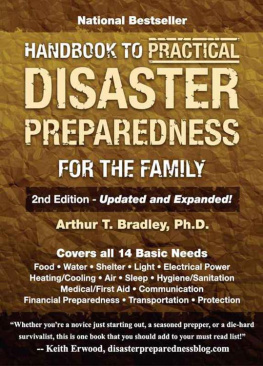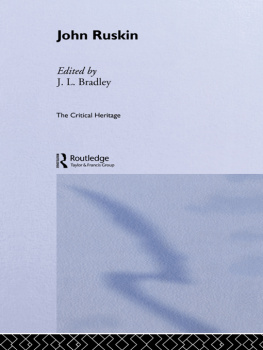Candy bought in the stores is likely to be expensive, poorly made, or impure. Candy made at home need be none of these things. And how enjoyable the process of candymaking!
What a pleasure it is some afternoon or evening when there is time to spare, to gratify the appetite with some confection, easily made! Even the little folks may take part, may help in the exciting business of manufacture, learn something of the mysteries of the kitchen, gain a little in power to use their head and hands. All of us enjoy the process and relish the product. Why, candymaking is one of those all important household pleasures that make family life mean what it does. The hours thus spent are an intimate part of that life. The writer believes, therefore, that she serves all homelovers in compiling this book. Its recipes have been thoroughly tried and tested in our school kitchens. They are simple and well adapted for ordinary use.
It is in the hope that they will be the source of many a pleasant time at home that this work is committed to its readers.
Candies are composed of sugar of various kinds, chocolate, nuts, fruits, colorings, and flavorings. Each of these has its own particular value as appealing to the sense of sight, the sense of taste, or the need of the body for nourishment.
Sugar
Sugar (C12H22O11) is a crystalline substance known by its sweet taste and its solubility in water. Sugar undergoes little change during digestion; as glucose it is carried by the blood through the body, and unites with oxygen breathed in from the air, forming carbon dioxide (CO2), gas, and water, in which forms it leaves the body. During this change, energy is produced, and used for muscular work. Sugar is more rapidly oxidized than any other kind of foodstuff, and makes a very desirable quick fuel food.
The principal kinds of sugar are cane sugar or sucrose, grape sugar or glucose, milk sugar or lactose, and fruit sugar or levulose.
Cane sugar is obtained from sugar cane, sugar beets, and maple trees. It is sold in many forms. Granulated sugar is the kind most commonly used in candymaking. It is made by dissolving, filtering, and crystallizing the raw sugar that has been extracted from the sugar cane or sugar beet.
Brown sugar is not so completely refined as white sugar and has more flavor. Keeping it in a covered jar in a cool place prevents it from becoming lumpy.
Confectioners sugar (icing sugar) is cane sugar so very finely ground that it is like a powder, and dissolves instantly. In recipes where it is called for other sugar cannot be substituted, although confectioners sugar can be used in place of powdered or granulated sugar. It is a pure form of sugar with nothing added to it.
Molasses is a by-product in the manufacture of sugar, and cannot be crystallized with ordinary methods.
Maple sugar is obtained by boiling down the sap obtained by tapping maple trees. Its delicious flavor is due to impurities that are present. Maple syrup can be made by dissolving maple sugar in boiling water, or by using the maple sap before it has been sufficiently reduced to become crystalline. The amount produced in this country each year is by no means sufficient to supply the demand, and consequently there are many imitations.
Grape sugar or glucose, found in honey and all sweet fruits, is less sweet than cane sugar. It may sometimes be seen on the outside of dried fruits such as dates and raisins. It is manufactured on a large scale from cornstarch, and is for sale as glucose in kegs and barrels of 110, 300 and 650 pounds each. As corn syrup or Karo, where it is combined with sugar syrup, it can be obtained in red label and blue label tins of one and one half and two and one half pounds capacity. When used in candies it prevents crystallization and gives a smoother product.
Milk sugar or lactose is present in milk, and when separated from it is sold as milk sugar. It is not sweet, and is only found in candy when milk is used.
Fruit sugar or levulose is found in sweet fruits.
It is sweeter than cane sugar and too expensive for ordinary use
Chocolate
Chocolate is obtained from cocoa beans cleaned, roasted, and finely ground. It contains much nourishment, in a concentrated form, fat, protein, and carbohydrate being present, with very little water.
Chocolate used on the outside of candies is called coating chocolate. Large candy manufacturers grind and blend cocoa beans to get the particular grade of chocolate coating for which they are famous. Sugar and vanilla are added, and any chocolate sold by name can be relied upon. It is for sale in ten-pound cakes, and should cost not less than twenty-five cents a pound for a good quality. There is upon the market a sweet coating chocolate in one sixth and half-pound cakes, in red wrappers. This can be obtained from grocers, and is very satisfactory.
Bitter or unsweetened chocolate has had nothing added to it, and should be used in fudges and other candies in which chocolate is cooked with sugar. It is for sale in quarter and half-pound cakes, divided into small squares, each weighing one ounce. Bitter chocolate is combined with sweet chocolate, and used for coating bitter sweets.
Cocoa is prepared from cocoa beans by the removal of a portion of the fat. Sugar, flavorings, and sometimes starch are added.
Cocoa butter is the fat obtained from the cocoa bean in the manufacture of cocoa. A small amount is sometimes added to melted chocolate to keep it thin enough for dipping, at a moderate temperature.
Nuts
Almost all kinds of edible nuts are used in candymaking. They contain protein, fat, and carbohydrate in varying proportions, and are excellent sources of energy. Some, like peanuts and black walnuts, almonds and pine nuts, are so rich in protein that they may be used as meat substitutes. Their digestibility is increased by being finely ground. Most nuts may now be obtained shelled at about the same cost for the edible portion as in the shells. For some purposes, broken nut meats are quite satisfactory; they cost less than the whole kernels. Nuts, when used in candies, increase the bulk and food value, detract from the sweetness, and improve both appearance and flavor.
Almonds and English walnuts are the nuts chiefly grown in this country. There are both sweet and bitter almonds; the latter are used sparingly to give flavor to almond confections. Jordan almonds are the finest almonds grown, and are for sale out of the shell, as are also other smaller and shorter varieties.
Almond paste may be made at home of finely ground almonds, but it is more satisfactory to purchase it ready for use in one and five-pound packages.
Brazil nuts are large three-cornered nuts, with a hard shell and a brown skin. The latter should usually be removed before the nuts are used in candy. Beechnuts and butternuts (white walnuts) are not often found in the market, but if obtainable may be used in recipes that call for walnuts or pecans.
Cashew nuts are small crescent-shaped nuts, and are usually sold with the shells removed.
Chestnuts should be of the large Spanish variety. They are rich in starch, and when boiled in syrup are a delicious confection. They may be purchased in bottles as marrons in vanilla or brandy-flavored syrup, and used for centers of fancy bonbons, chocolates, or glacs.
Coconut may be purchased desiccated in packages, or as desiccated, long, short, or macaroon, in bulk from wholesale confectioners. The very long shreds of coconut are desirable in some candies. Fresh-grated coconut should be used for coconut cakes if obtainable.













